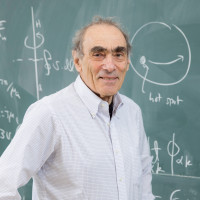Modeling the insides of a neutron star -- Improvements to a model for the inside of a neutron star make it applicable to neutron star mergers

RIKEN astrophysicists have developed an improved model for the interior structure of neutron stars that agrees well with observations. Unlike previous models, it can be extended to consider what happens when two neutron stars merge.
The collapsed remnants of giant stars, neutron stars are fascinating objects. They are a mere 20−30 kilometers in diameter but are nearly 400,000–600,000 times more massive than the Earth, which makes them incredibly dense.
Neutron stars are not uniform agglomerations of neutrons—like the astrophysical equivalent of a giant atomic nucleus containing only neutrons. Rather they have an onion-like structure. Theorists have been busy trying to model this internal structure based on quantum mechanics and data from observations.
Previously, Tetsuo Hatsuda of the RIKEN Interdisciplinary Theoretical and Mathematical Sciences Program and his co-workers had developed a model that consists of three layers: an outer layer made up mostly of neutrons, an inner core consisting of quarks—the building blocks of neutrons—and a transitional region between these two layers.
Now, Hatsuda’s team has taken this model a step further by using a more general equation to describe the outer layer, which is made up of about 97% neutrons and 3% protons and electrons.



